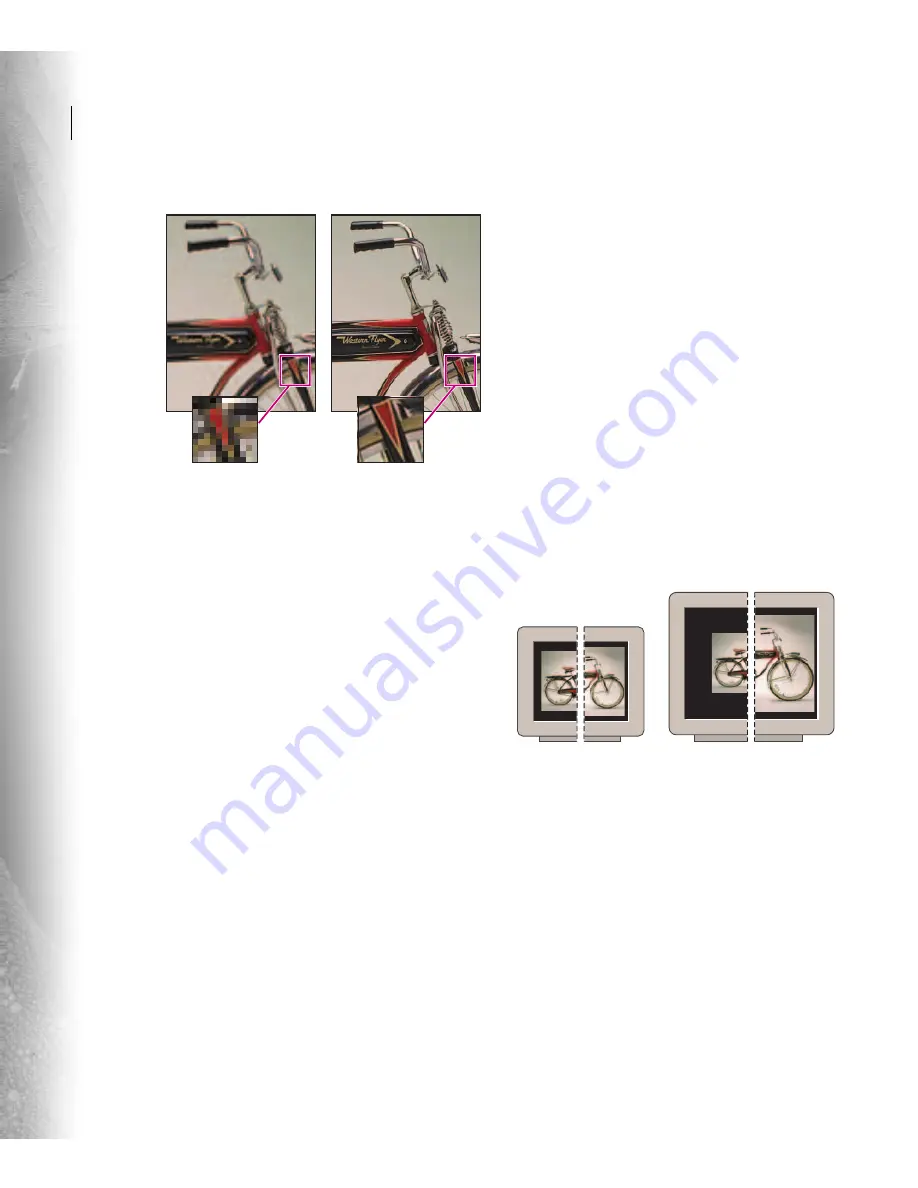
76
CHAPTER 5
Resizing, Cropping, and Laying Out Images
Same image printed at 72-ppi and 300-ppi; inset zoom 200%
If you need to print using a specific resolution, or
you want to print an image significantly smaller or
larger than the image’s pixel dimensions allow, you
can resample the image. Resampling involves
either throwing away or adding pixels to the
image. For more information, see“Resampling
images” on page 77.
About printer and monitor resolution
Printer resolution refers to the number of ink dots
per inch (dpi) produced by a printer. Most desktop
laser printers have a resolution of 600 dpi. Inkjet
printers produce a spray of ink, not actual dots;
however, most inkjet printers have an approximate
resolution of 720 to 2880 dpi.
Your printer’s resolution is different from, but
related to your image’s resolution. To print a high
quality photo on an inkjet printer, an image
resolution of about 300 ppi should provide very
good results. Depending on the image, you can get
acceptable results with a resolution of 240 ppi.
Using the lower resolution will let you print a
slightly larger photo—if you are willing to accept
some image degradation.
Your monitor’s resolution is described in pixels per
inch. For example, if your monitor resolution is set
to 1024 x 768 and your photo’s pixel dimensions
are the same size, the photo will fill the screen. You
should consider the lowest monitor resolution that
your photo is likely to be viewed on when you are
preparing images for viewing on-screen.
How large an image appears on-screen depends on a combina-
tion of factors––the pixel dimensions of the image, the monitor
size, and the monitor resolution setting. The examples above
show a 620- by 400-pixel image displayed on monitors of
various sizes and resolutions.
15"
20"
1024 x 768 / 640 x 480
832 x 624 / 640 x 480






























